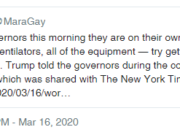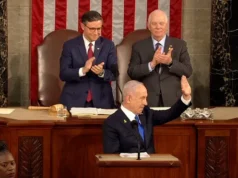The US News Law School Ranking is the bible for prospective law applicants. It’s the King Bob Morse version. Followed religiously and taken as gospel, the US News Ranking is part fact, part fiction, and only fractionally part of a solid analysis of good law programs.
Still, the US News Ranking rules the Law School world. Law schools generally despise the ranking, and Deans and their senior staff spend too much of their respective time chasing their administrative tails or trying to make Mr. Morse chase his in response to the rankings. In a game of cat and mouse, Mr. Morse is the Lion … though sometimes he doesn’t realize that he’s on a reservation where his daily movements are manipulated.
The US News Law School Ranking needs reform, and it needs it now.
If you are a prospective law student, these six-thousand words are free, and they will be light reading compared to the dense textbooks you will pay dearly to study. If you administer or teach at a law school, and you are unfamiliar with this subject matter, you should find new employment.
As for prospective students, understanding how to evaluate law schools and the current legal education market is critical. You are in the catbird seat, and you need superior information to make good decisions. The current US News Rankings fail you in too many ways, hence my desire to discuss reform.
As a former assistant law school dean working in management and planning, I learned a great deal about the US News Ranking (Ranking). I learned how some schools manipulate it, and why the Ranking is painfully inadequate for the job it intends to do. Just like I did over twenty-one years ago, prospective law students trust the ranking. For that reason, it must be better.
Rather than merely critiquing the Ranking, I thought it responsible to describe the conditions giving rise to the need for Ranking reform. Likewise, I thought it necessary to both critique the Ranking and offer positive changes.
Why is US News Ranking so Important?
It is important because all data collected demonstrate that law school applicants, the consumers in the law school education industry, rely heavily on the Ranking. In fact, before legal education ran off the cliff, the US News Ranking alone was nearly the sole determining factor for the overwhelming majority of applicants in choosing a law school. That’s market power. With great power, as my former Dean use to say, comes great responsibility.
The US News Ranking is a market maker in this industry.
The legal education and legal services markets have changed dramatically and so too must Rankings. Today, law students are rightly more price sensitive, and they use a better mix of the Ranking and cost to determine where they will attend law school. It is still, however, “ranking” and “cost” that drive applications. The Ranking is nearly always part of the equation and decision process. This reality and recent legal education market changes mandate that Mr. Morse, a man in the Ranking business since the 1970’s, update his analytics.
Picking a law school is easy if you are picking among Harvard, Yale, or Stanford.
If Harvard, Yale, or Stanford law admits an applicant, such prospective student ought to seriously consider going to those institutions, irrespective of cost. The most elite schools don’t necessarily offer you a better legal education. Indeed, they have no secret book of law that others do not. But they do have outstanding faculty, superior resources, powerful alumni, and market reputation that competitors cannot match. You are not buying the education; you are buying the market power and access to more jobs and more elite jobs.
About 97% of law school applicants must make a different choice, and they must choose among the other nearly 200 accredited law schools. Outside the biggest names in the game, it is still about price, market power, jobs, and job portability. The advice I gave and still give law students is to go to the best law school you can at the lowest possible cost. Since law schools are desperate for students, and I mean, flat-broke damn desperate, law schools are wheeling and dealing on price. The advertised tuitions are nearly meaningless. It is all about tuition discounting now.
The US News Ranking formula and data collection are deeply flawed for the reasons I set out below. The Ranking, or any other ranks, should inform legal consumers on the issues most important to them. Likewise, Rankings should be subject to little manipulation by the actual schools themselves. The US News Ranking fails that test. Mr. Morse either doesn’t fully understand the institutions he ranks, or he is prepared to accept a flawed methodology so long as consumers of this product continue to rely on it. Cash is king; one law school dean likes to say.
Here is the current state of legal education as it relates to incoming students.
Understanding the Legal Education Market and Law School Financial Crisis
Most law schools today do not have enough law students to cover their respective overhead. In short, Law schools are and have been deficit spending. That is not why Universities have law schools. Universities use law schools, like business schools and medical schools, as profit centers. In 2010, that model blew up. Except for the wealthiest and biggest schools, most Universities are now subsidizing their law schools with little relief in sight. In fact, tuitions had been soaring for years leading up to the legal education crash, which followed after the financial crash.
Those rising tuitions were possible due to the high demand for the degree. Moreover, the tuitions were essential to meet both huge over-heads and to profit from the law students for the benefit of other university programs. When applicants dried up and became nearly half in a matter of a few years, law schools faced a grim reality with few practical choices.
Unlike businesses, academia has real restraints on cutting cost. They have tenured faculty, essentially permanent employees, they cannot cut loose. These permanent faculties become a tenure-tax that can’t be cut. (Read my book “Of Serfs and Lords” for more on the tenure tax). Instead of cutting the expensive, unnecessary personnel, they trimmed where they could on administration, marketing, and other budget items.
None of that cost-cutting could make up for losing a huge percentage of students from their incoming classes. Law school applications, once over 100,000 nationwide, fell to half of that. Yet, nearly every law school in business at that time is still in business. Generally speaking, when an industry loses half its customers, businesses go under.
Why not just cut tuition to law school?
Neither university nor law administrators wanted to cut the advertised tuition to existing law schools to attract applicants. Many thought doing that was a sign of weakness for a school, and still others recognized that cutting tuition had significant PR problems for recent grads and alumni, many of whom are in a tough job market with hefty debt. Still, many other law school deans and their faculties are so isolated from the change in the legal market itself, they understand very little about the structural upheaval that will continue to hold back demand for new lawyers. In short, many educationalists thought the law school collapse of applicants was short-lived, and university subsidies and funding would prop them up until demand returns, magically.
I can tell you, not surprisingly; that a competent analysis shows that cutting tuition in the short term would absolutely lead to more applicants, larger classes, and more revenue, for some schools. Other schools just might fold. Two years ago I told an associate dean that I could see 25-50 law schools folding if conditions persist. Of course, if we ever obtain real economic growth, it is still possible demand will pick up. Right now, and for the next three years at least, demand for newly minted, non-specialized lawyers will be weak. The demand for IP lawyers is still strong.
Yet, most schools and universities resist cutting tuition. Many froze tuition increases, but cutting was a step too far for almost all law schools. Instead, what most law schools have done is advertise a “sticker-price” for the degree, and then negotiate with prospective students to discount tuition through “scholarships.” It has been an effective tool, though it still does not address the reality that some students may not even apply to an institution if the sticker-price and the rank do not provide an attractive enough incentive for the applicant. Hence, an over-priced law school may never get to negotiate to bring a student in more cheaply if such a student won’t even apply.
None of these market changes are the fault of Mr. Morse. Failing to change with the market, that is the fault of Mr. Morse.
Tuition Discounting and Rank Manipulation
Tuition discounting is not merely a matter of economics. After-all, discounting tuition has not and will not make all law schools whole. It won’t even make whole the institutions that do it most effectively. Even with discounted tuitions, there simply are too few students to fill classes at the vast majority of law schools. Even at the top schools, class sizes are smaller. Intuitively, one might rightly ask, to what end or advantage is discounting tuition so deeply if the need is for more cash? It’s a fair question, to which there is a complex answer.
Tuition discounting is about survival. It is about survival in the short-term economically, and mostly, it is about US News Ranking survival. Tuition discounting is a primary weapon by law schools to manipulate the Ranking and to ensure that a school’s rank does not unexpectedly, and in a manner from which it cannot recover, fall too far. Law applicants have no way of knowing this, but the differences between schools in the Ranking, numerically, are remarkably small. That is, but for a rounding here or there, schools could move five, ten, or more spots in a year among the top 50 schools.
The industry refers to the top 50 law schools as the “top-tier.” Inside the top 20, movement up the ladder is hard. Falling down the rank from that lofty spot in one year is hard too because top 20 schools have ranking points that put them firmly above the rest of the top-tier. However, schools from 20 to 50, and even those from 30-60 are for most purposes, quite similar. In raw numbers, using a flawed system, they are essentially the same.
Legal consumers, however, see those ranks as absolutes. Most think that number 34 is truly better than number 41. It might be, or it might not be. In fact, it might be better for one student and not for another, or number 41 might be entirely better, it’s just the Ranking is too flawed to trust.
The US news Ranking methodology gives low confidence that one can reasonable value or account for any significant difference in the ranks between the bulk of the schools in the first-tier peloton. Before I dive too deeply into the Ranking, I must tell you more about tuition discounting and why it manipulates a large portion of the Ranking.
Schools use tuition discounting to secure a rank position. Law Schools have few opportunities to manipulate rank criteria easily. The rank criteria may have flaws, but law schools just can’t move some criteria on their own. Though some schools foolishly try to move reputational value by producing what one law dean loving calls, law porn. Those are the costly brochures that law schools mail around to boost their profile, with no measurable evidence that it works in any way.
However, 22.5% of a school’s US News Rank is the quality of its law students as determined by the LSAT and GPA scores of the incoming class. A school with money can move those numbers by aggressively giving tuition rebates to students whose GPA and LSAT numbers exceed the school’s prior year reported numbers. Moreover, smart institutions learned early how to use analytics and applicant matching to maximize these numbers and boost their rank. The current practice of tuition discounting is now the most common method to manipulate the Ranking. It is a common and essential practice of manipulation and recruiting by schools for which the US News makes no effort to address. Maybe it doesn’t think it should. I do.
Students as Revenue and the “Mythical Average” Student
Applicants with an LSAT or GPA that both exceed the quality numbers of the school to which they apply are called high/high applicants. These students control tuition discounting. Every time a school lands one high/high, it has more flexibility to take an applicant at or below the average quality numbers. In fact, the higher the high/high, the more a school can net additional low-lows, or high/lows. Let me explain. If an institution has target quality numbers of a 160 LSAT and a 3.5 GPA, it is ideally looking to meet those numbers are exceed them when recruiting students. In reality, however, most applicants have one of those numbers and not both.
You may not realize this, but law admissions build classes by matching high LSAT and high GPA students to create a “mythical average” student. It is indeed rare that one student has both the quality numbers, two quality numbers significantly better than the institution’s targets, hence the term high/high. If I apply to the fictional school above and I have a 168 LSAT and a 3.95 GPA, the school will often offer me as much money as it can to come because even if it must give me nearly a full ride, that school might be able to take as many as three or four applicants whose numbers are below the targets. An investment in me nets more tuition payers below me.
Do you want to pay very little to go to law school? Be a high/high.
Why do Harvard, Yale, and Stanford stay at the top? They have an infinite number of high/highs. Every elite student wants to go there. If these institutions only took the best, their quality numbers would be much higher than the remarkable credentials they now require. This allows Harvard to admit, frankly, anyone it wants. For every legacy admission, political favor admission, donor admission, or affirmative action admission, it can slide in another high/high and drive up or keep up the LSAT and GPA numbers that form 22.5% of their rank score. Bully for them.
If you run a law school that is not Harvard, Yale, or Stanford, you don’t have unlimited high/highs. In fact, most schools only get dramatic high/highs in small batches because frankly, most high/highs apply higher up the food chain. If you have a 174 LSAT and a 3.98 GPA, you are not applying to George Mason. You are applying to Yale.
At this point, you must be asking yourself, how do schools hurting for money profit from all this discounting? Sometimes I forget that most applicants to law schools are neither economics nor business majors. With a fixed overhead and too few seats filled, do you want more seats filled at a cheaper price or empty seats? It’s the reason Trivago gets you a good deal sometimes on a Hotel. At the last minute, everyone would rather have someone in the room for revenue than an empty room.
Unlike hotels, however, law schools know something you do not. The tuition discounting is almost all for the first year only. To the extent a student’s “discount” applies to the second year, it is almost always tied to a student finishing at a certain class rank, usually the top third of the class. If he or she does, the student may get additional second-year relief. If not, then two-thirds of the students move into full-freight tuition payers. Think of tuition discounting as that introductory offer to get all your cable channels for $10.99 a month for the first year only. After that, you go up to full freight, and you are locked into a three-year deal. Only in the case of law school, you might get year one at 10 or 15K, but pay 40K for years two and three.
“Discounting” is good economics for schools battling for law students. Likewise, grabbing high/highs creates LSAT and GPA statistical room to pull in more revenue by adding addition full-freight tuition payers whose numbers are below the averages. The law schools are starved, and you are revenue … increasingly … unfortunately. They can’t fire tenured faculty, so they more of you … by hook or by crook.
For non-elite schools tuition discounting is really a market-driven battle to win applicants. That’s a good thing for elite law applicants. Moreover, it should never be misconstrued that I suggest that law schools ought not to use scholarship money to attract outstanding candidates. Schools should use money for that purpose and to retain their top students to prevent transfers. Likewise, recruiting kids with low first-year tuition is not at all crooked. Most kids think they will finish in the top of their class and keep the discount. The reality is, 67% can’t do it.
What we have now in recruiting is not merely offering scholarships for quality kids. We have law schools buying down large portions of their entire class for the economic reasons I explained, but also to secure a higher US News Ranking, or to stop from falling in the Ranking. Schools will do whatever it takes to stay in the top-tier. Why?
Schools know that falling from the top-tier dramatically reduces applications. Once you lose applications, you don’t have a position from which to bargain, and a smaller pool of applicants always means a less qualified, less academically strong class. That means clawing back from falling out of the top-tier will be expensive, and a long, slow slog.
Tuition discounting secures the rank, and thus secures the school’s viability in the Ranking. I merely argue that the Ranking should take into account discounting. The Ranking should reward discounting for academic excellence, and it should punish schools discounting for other purposes. Finally, the Ranking should judge the strength of the class a school admits that is willing to pay the bulk of the advertised price. That majority is the true reflection of the class talent.
Morse’s Ranking doesn’t take into account any of this manipulation, and it should. At the top of the food chain, tuition discounting rewards admitting applicants who are not qualified to attend that institution. Ironically, there is an ABA regulation that prohibits such a practice. However, since law schools use this practice primarily for affirmative action students, the ABA turns a blind-eye to enforcement. What tuition discounting does is it permits the law schools to create their own rank value. The more they discount, the better their student high/high yield and the higher the score on that huge portion of the school’s rank. This drives the price down for some students.
I am not suggesting that it’s bad to have a practice of cutting tuition. Not at all. If you are paying more than $15,000 a year to go to a law school ranked outside the top 10, your investment may be dubious.
I like tuition discounting. However, I don’t like schools manipulating the rank as a reward. The school is not attracting students on reputational strength; it is attracting them on price, and through cost-cutting building a false ranking reputation. For a non-high/high, the current rank system misrepresents the true strength of the class, let alone the value of the investment. That’s the issue.
If UC Davis made law school free, for example, it would attract a remarkable number of applicants and its quality numbers the next year would reflect a gigantic jump in the ranks. Is it, however, really any better than the year before? Maybe. No doubt stronger classes produce, generally, stronger graduates, better bar passage, and ultimately, on average, stronger lawyers. In reality, however, all it has done is manipulate the rank, which then drives additional applicants.
Morse, however, could easily control for this manipulation in different ways. He could tier the student quality ranking, splitting it into three components. Each component would be assigned a value of the total rank score percentage for GPA and LSAT. Rank incoming classes by those admitted above the median, rank those admitted who pay most of the advertised sticker-price, and then rank those below the median who pay less than half the advertised sticker price. In this method, US News rewards tuition cutting for academic excellence. It then also ranks the majority of the un-incentivized class to reflect properly the class’s peloton. For those admitted below the class numbers who receive scholarships for any purpose, the rank would penalize those admissions. Some may object to this concept but make no mistake, US News has done something like this before in the name of transparency.
The Ranking use to permit evening programs to “carve-out” their class quality numbers from the US News Ranking. US News determined that doing so did not permit an accurate view of the quality of the class, and then required that evening students be counted in the quality numbers of first-year admits. The result of that decision was that schools often had to turn-away strong, hard-working, older, mature, outstanding professional candidates with lower “scores” because if they took such students, US News would punish them by dropping their rank.
Make no mistake; that accomplished two goals. It made evening students unquestionably as strong as day students, which was good for those admitted. It also pushed some students out of the market due to fewer choices, or down to the programs for which they were a numerical academic match. This change would do the same thing.
Transfer Students and the Revenue Grab
Of course, the real scandal in these ranks now is what happens after the first-year, about which the Ranking seemingly doesn’t care at all. Many schools lose transfers out, and the true academic make-up of the class is completely different. If a school’s top 10% is only twenty-two students, and ten of them transfer out, which can and does happen, why not have US News reflect this with a second year ranking?
Law schools are really working the revenue side of the house without great concern for the quality side of the house. Many law schools are routinely accepting transfer students in large numbers to capture revenue, even though the students would not have been academically eligible to be admitted to the institution, to begin with. What used to be a normal practice of accepting great students who proved their performance at another school has become a pure money grab where higher ranked schools prey on students from lower ranked schools in order to bring in transfers and increase revenues.
The US News Ranking makes no effort to address this issue.
It is true, however, that some schools are wary of transfer numbers that are too large because when students graduate they must be placed. If they are not employable, that does hurt the school’s rank. Still, this placement ranking does not really address the reality that 22.5% of a school’s rank is based on student quality before students ever take a law school class. The ranks do not reflect the student quality after the first year when performance is measured, and transfers abound. It seems odd we rank the quality of a school by who applies without regard to who stays or transfers.
My proposal to tier the student quality ranks would require US News to make demands on the schools. Right now, much of the data on which it bases its Ranking are collected from the ABA reporting numbers or its own surveys to willing third-parties. To do what I suggest would require cooperation. Law Schools would resist providing US News with this detailed information on tuition discounting. Of course, US News owns the hammer. It can simply do as it did nearly 20 years ago when it changed the formula to punish non-compliance on employment data.
US News, remarkably, used to accept employment data from law schools and use only the data reported to compile employment numbers. Many schools simply did not report anything on graduates it could not “find.”
One year, US News rightfully decided that if law schools did not supply all data on every student’s employment status, it would count them as unemployed. The change occurred without notice, and the result the next year sent school tumbling in the Ranking. The following year, law schools were hunting graduates around the world to get this data so they could comply with US News mandates. US News has all the power here, and they can change the formula to require enforcement. (Harvard Law challenged US News on its power by attacking the LSAT, and I wrote about that too. Not surprisingly, the ABA conceded on Harvard’s effort to kill the LSAT.)
Of course, tuition manipulation and discounting is only one small part of the ranks and not even its largest flaws. I spent much time on it because it is a part of the ranks easily manipulated by the schools. The ranking system has other significant flaws, and they too must be addressed. In fact, the entire formula must be changed.
Additional US News Ranking Flaws
We can argue over how much or what factors should be part of a law school’s ranking. Below, I examine what US News does with the balance of the ranking formula, and why it does not work as well as it should or could.
The US News Ranking uses the Bar passage rate as part of the overall rank. It assigns a value of only 2.5% of the total rank score to passing the bar? It’s almost an absurdity on its face. Ask a law student how important is it that he or she passes the bar? Do you think the number will be 2.5%? If you don’t pass the bar, you will not practice law.
Some tenured faculty members, most of whom don’t practice law, lament the idea that bar passage is critical to a school or even their responsibility to the students or the profession. They claim it converts them into a trade school to teach to the test. The reality is bar passage is essential for most graduates to work in the legal field.
If law schools are not graduating kids who can and do pass the bar, who rightly cares how qualified the student looked before he or she enrolled? How is it that the LSAT and GPA numbers of a class merit 22.5% of a school’s rank, but graduating bar passers is only 2.5% of a law school’s rank in Mr. Morse’s Ranking?
LSAT and GPA reflect what students did before they reached an institution. The bar passage rate reflects how well they did after being in the law school. One might argue that this number ought to be the largest component of the Ranking system.
A school’s reputational rank is a shockingly high percentage of a school’s US News Ranking. I am alright with that percentage, but how it is formulated is nutty, to use an industry standard term for any industry. The methodology is flawed, biased, and fraught with opportunities for outside manipulation. Moreover, the system invites gamesmanship and the opportunity to allow competitors or even political or legal adversaries to invade the reputational ranking system. Let’s examine.
US News assigns 25% of the total rank to reputation as reported to it by a survey of other Deans and department chairs of other institutions. It reports that about 60% of those to whom it mails the survey respond. I’m sorry, but most law schools are competitors with each other either within their region or within their US News Ranking neighborhood. Still, others are philosophical and political competitors and adversaries. I see no basis to use these survey results and no reason to accept them as valuable.
These surveys, I know personally, are strategically gamed. They are perhaps valueless. So unreliable are they, that if US News wants to use a blind survey to people of title and rank in competitor intuitions, without determining bias, the percentage of the score should be small, very small. Again, passing the bar is scored at 2.5% of the rank value, but the opinion of a George Mason Dean about the value of his University of Maryland competitor should be part of a 25% score? The flaw is self-evident.
I would recommend substituting the reputational rank score with a research and citation rank score. US News could do this by assigning a value of the institution’s scholarship by looking at yearly downloads of scholarship and by how often faculty are cited in published works that year. Neither of these methods is perfect, but they are superior to a blind survey of partisans.
US News also uses a survey of Judges and practitioners to assemble a reputational rank score with a value of 15%. Mind you, these surveys together account for 40% of a school’s Ranking. The Bench and Bar survey has more merit, though I would prefer to see it sent only to Judges. Moreover, I’d like to see the score segmented. This would group institutions by region and by national reputation.
Thus, the state and federal judges of a given region where a school sits and where most of its graduates practice would pass judgment on the reputation. That might represent 15% of the score, while national reputation, a compilation of scores by judges outside the school’s region would represent 10%. This would give a stronger rank for each school, rewarding it through unbiased reputation by those who know it best and are neither partisans nor adversaries.
Likewise, to the extent a law school has a large national footprint that makes a degree more portable, a separate national rank would add value and give legal consumers critical information. If you are not going to a top 10 school, but instead you are choosing among the top-tier peloton, wouldn’t you like to know how judges think of each school in their region? If you don’t plan on practicing where the school is located, wouldn’t you like to know among the choices you have, which school enjoys a better, stronger footprint with judges nationally?
US News then assigns 15% of an institution’s value to its resources provided to faculty. This is essentially the 15% bump given to wealthy institutions. The resources number is another number that schools routinely manipulate. For that reason alone, it is suspect. Likewise, it is hard to quantify what among those resources results in either classroom, clinical, or scholarship expenditures that support law students. Because the number is inherently unreliable, I would eliminate it, lest US News gives ranking credit for universities charging back the light bill to law schools in order to increase the “resources” spent in the school.
Here is a ranking system I think would better reflect the relative value of law schools. Of course, what would I know, I only graduated from a law school, taught in one, administered one, created a Legal Center in one, was elected a graduation faculty speaker at one, oversaw one as Board of Vistors’ member, and served as an Alumni President of one. Likewise, I worked at an AM Law top 20 firm, and I ran an international technology company. Mr. Morse may have better insights into what is important, but I offer my experience for his consideration.
Bar Passage rate: 20%. If your students can’t pass the bar, you have failed them or failed by admitting unqualified students.
Student applicant strength 20%. The LSAT score should be 15% and grades should be 5%. Grade inflation, phony majors, and grade variation make grades a less reliable indicia of quality. Within this score, incoming classes should be ranked using the following formula: 65% of the LSAT and GPA score would be attributed to students who have an LSAT score 25% or more above the median and receive aid of 50% or greater off tuition. Five percent of the score would be those who fall more than 35% below the median and receive aid of 40% or more of the tuition. The balance would be those left over who pay at least 80% of a school’s tuition. This would reward schools providing aid for academic performance, properly weight the majority of the class, and punish schools who cram significant numbers of students into their classes who fall far below the school’s median LSAT or grades. I have created an example of 3 fictional schools who all have the same median LSAT and would now be treated “equally” under US News. I then adjusted for the population using the formula above. As you can see, these schools are no longer equal but instead have their classes ranked by deviations from the median and tuition discounting. School A, who admits stronger students at the top range and fewer weak students, comes out the winner even though on paper, it’s median is the same as the others.

Second Year Class Strength 7.5%. Let’s re-rank the quality of the class after transfers in and out, using the same criteria above.
Reputational Rank 32.5%. This score should be measured as follows. Fifteen percent of should be a School’s regional reputational score based on a survey of Federal and State Judges in a school’s geographic region. Ten percent of the score should be based on a school’s national reputation, representing survey results from outside the school’s region. The last 7.5% should reflect a score based on research downloads and academic citation.
Job Placement 20%. Recent US News upgrades to this category reflect a positive change. Working at graduation in legal-related fields should be 5% of the score, and working at a job that requires more than a bachelor’s degree 9 months out from graduation should reflect 10%. Employment at Judicial clerkships and AM Law 100 firms should round out the remaining 5% of this rank.
Take Aways
It is past time for Mr. Morse to substantively overhaul the Ranking. Too many deans and administrators have gamed the system, and too many of these rank criteria don’t adequately force schools to account for what is important and critical for success. They leave consumers blind to important considerations.
Other ranking systems are popping up, but none have market share or power like the US News Ranking. US News alone can move the market and give prospective law students the superior, accurate, and most useful information in making such a momentous and expensive educational choice.
Law schools have changed. The legal market has changed. Legal education is quickly changing. It is time the ranks change to reflect all of these new realities. It’s time for a new testament to the King Morse Bible.
Prospective Law Student Advice
If you are thinking about going to law school, and you read this far, you deserve something. Mind you, I don’t have a separate business advising and counseling law applicants. Maybe I should. However, I have counseled innumerable prospective students on how to choose a law school, what to look for, and how to be sure it is the right fit, at the right price. Even in my recruiting duties for my former law school, I have looked prospective students in the eye after hearing their interests and expectations and sent them to consider other options.
Picking a law school should not be solely on any ranking system. It is a huge investment, and it is also a highly personal choice reflecting a series of factors.
Here is my advice:
If you cannot attend a nationally known, top-ten program, consider this.
Pay as little as you can to go to law school. It’s a great degree of enormous value, but that value drops, as do your opportunities if you over-spend. The former Dean of Northwestern wrote a great piece about who should be going to law school and where. I don’t subscribe to all that he says, but it is worth your read.
Pick a school on price, interest, and the ability to get a job. Much of what we say about getting into a high-end law school is true, and it has value as a general proposition. However, if you can attend a law school that is not in the top-tier, but enjoys a strong reputation in its region, and has an outstanding alumni base, consider that school if the price is right. In fact, you should be applying to schools where you beat their academic numbers, and if you do, price will fall into place.
A great example of such a regional powerhouse would be Seton Hall. It has a nationally known name, but far more importantly, it has been a bedrock institution in NJ forever. Its alumni network is strong, and its graduates are on the bench, in large firms, and practicing all over the New Jersey and New York legal market. It’s a fine school, and it reflects the type of choice one might consider if one wants to practice and stay in the garden state. Indeed, it might be a better choice than picking a school in the top tier, with no alumni connection to the state in which you want to practice.
Invest in a focused, small group, or one on one tutor for the LSAT. If that costs you 3K, it still might save you 20-40K on your investment by letting you get a great offer from the school you want to attend.
Visit a law school repeatedly, and make sure you meet, speak with, and if possible hang out with current students. Find an environment that works for you. You are going to be living in that school and with those people. Make sure you feel the fit is right, law school is stressful enough. When dealing with Deans, think Reagan. Trust, but verify.
If your quality numbers exceed a law school’s admission numbers, don’t commit too soon. No school outside the top 10 is over-booked. They are all under-booked. Keep them on the line as long as you can and play offers against each school. The best tuition discounts have gone to high/highs who hold out to just weeks before classes start. That’s tough, and it’s a gutsy strategy, but it could save you a boatload of money.
Dig into the placement numbers of a school and understand the strength, depth, and reach of its alumni base. That strength, depth, and reach will determine the reach of your job opportunities.
Find law schools with strong opportunities for summer, fall, and spring internships and externships. Every law student wants to be paid in the summer, but great law students build a real legal resume by adding to strong grades with substantive, relevant experiences. I was a hiring lawyer for an AM Law top 20 law firm, now top 10. Grades and class rank get you the interview. Substantive experience on your resume with those grades might make you stand above the other 200 candidates. Internships and externships, as well as clinical work will help you.
Find a school with a strong adjunct faculty. These tend to be legal leaders and dynamic people with job connections and internship and externship opportunities. More importantly, these people practice law. A strong tenured faculty will teach you how to think and analyze issues, but the adjunct faculty will marry your analytical skills with the real-life practice issues you will face.
It’s a great time to go to law school … at the right price … and in the right circumstances. Good luck.
Author: Richard Kelsey
Richard Kelsey is the Editor-in-Chief of Committed Conservative.
He is a trial Attorney and author of a #11 best-selling book on Amazon written on higher education, “Of Serfs and Lords: Why College Tuition is Creating a Debtor Class”
Rich is also the author of the new Murder-Mystery series, “The ABC’s of Murder,” book one is titled, “Adultery.”
Rich is a former Assistant Law School Dean and Law Professor. At Mason Law Kelsey conceived of, planned, and brought to fruition Mason’s Center for the Protection of Intellectual Property, known as CPIP, drawing on his expertise as a former CEO of a technology company specializing in combating cyber-fraud.
In 2014 he was elected by the graduating class as the faculty speaker at their graduation.
He is a regular commentator on legal and political issues in print, radio and on TV. Rich has appeared on hundreds of stations as a legal expert or political commentator. He provided the legal analysis for all stages of the Bob McDonnell trial and appeal for numerous outlets including NPR and WMAL.
Rich also writes on occasion for the American Spectator and CNSNews.com.
In his free time, Rich is part of the baseball mafia of Northern Virginia, serving on numerous boards and as a little league and travel baseball coach.
His Twitter handle is @richkelsey.






























